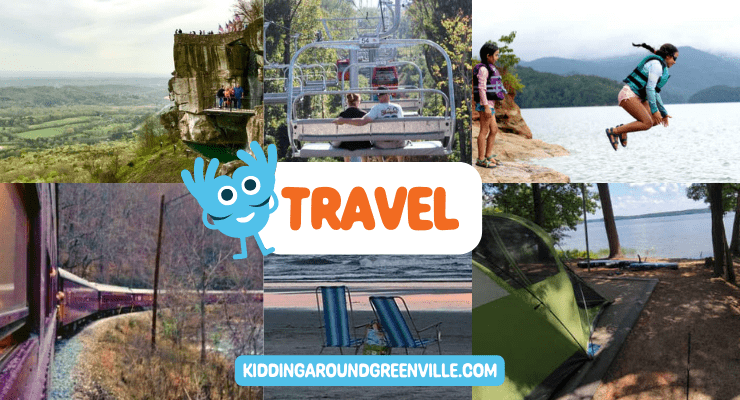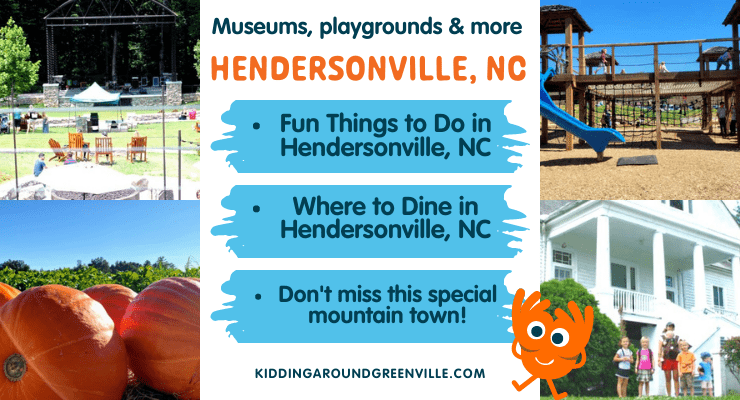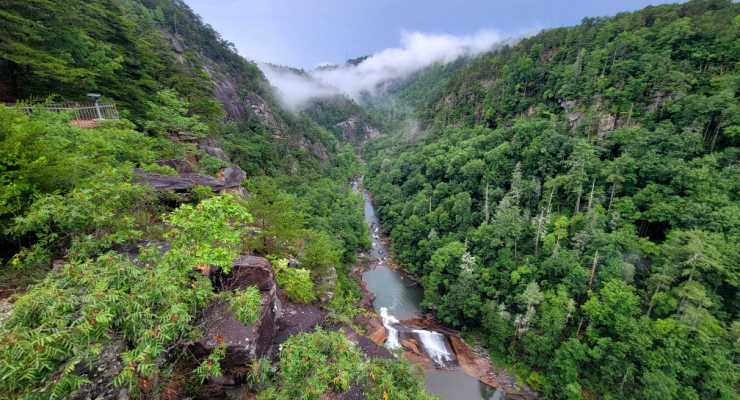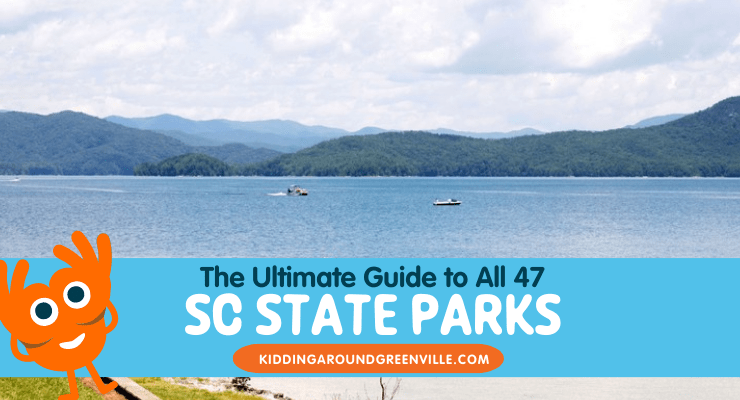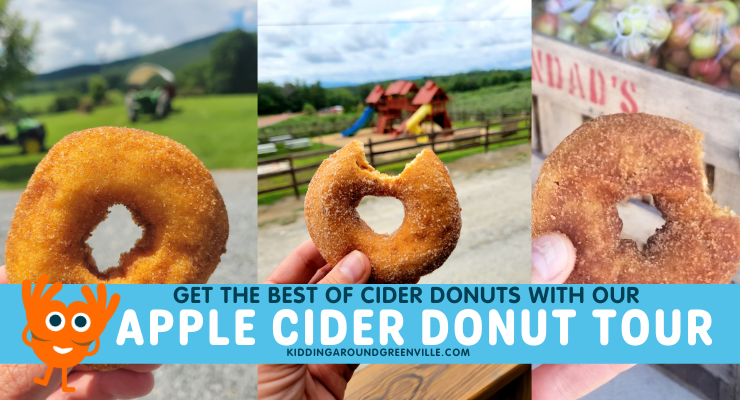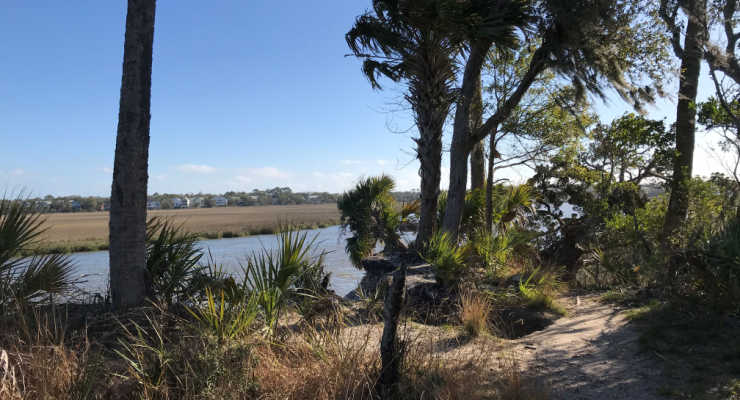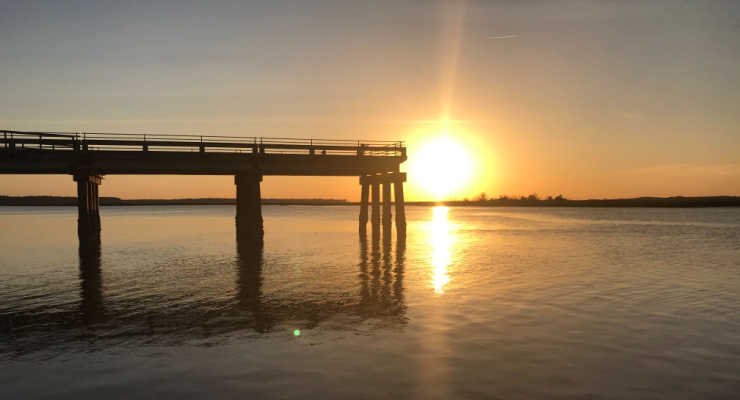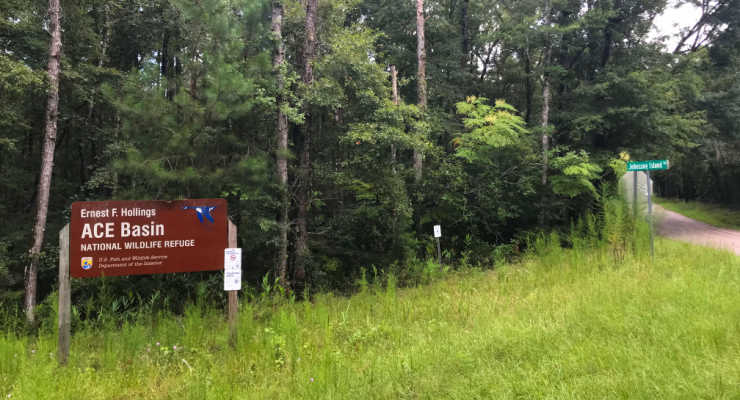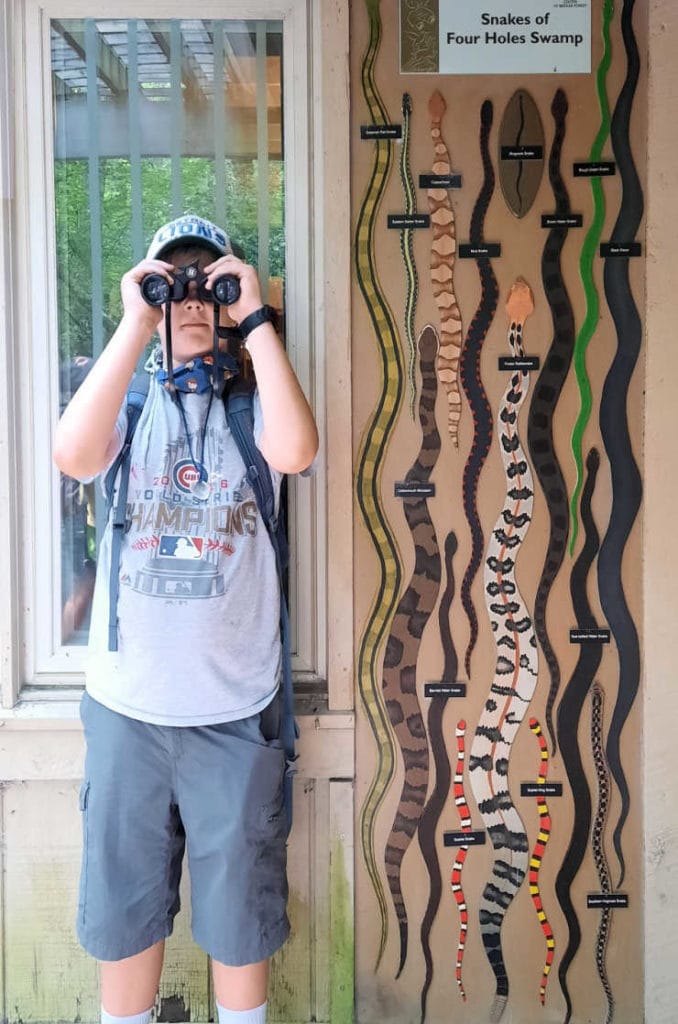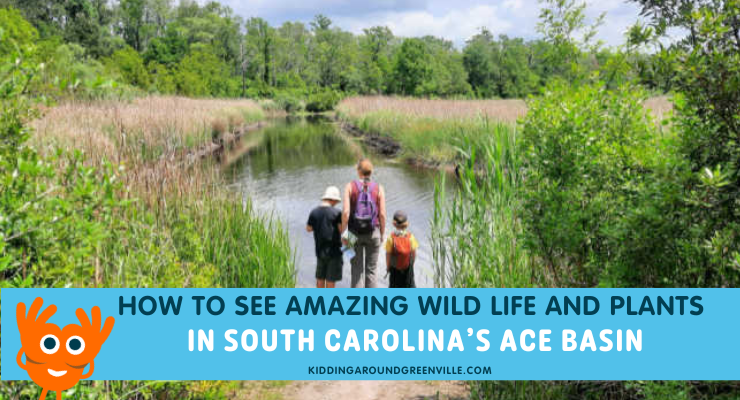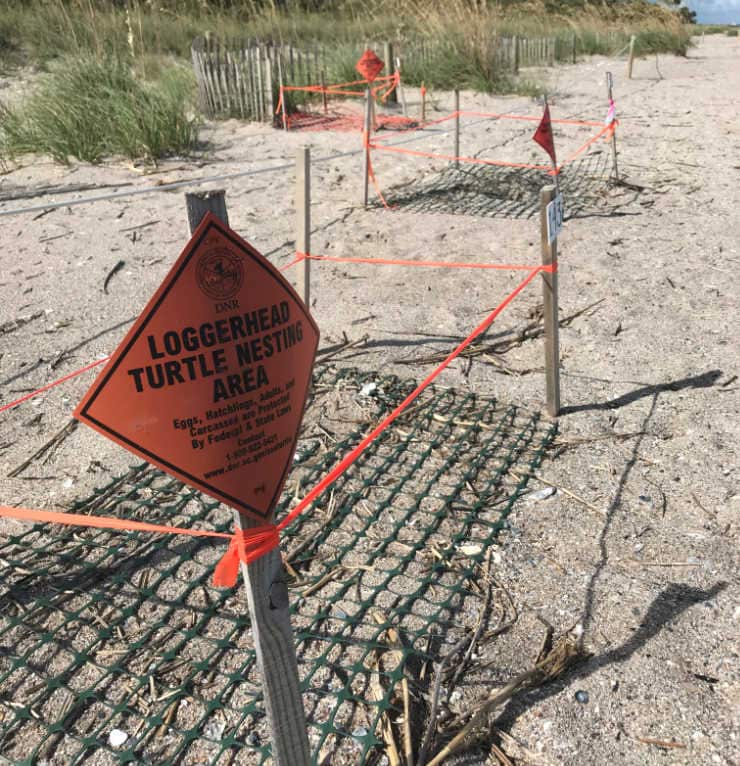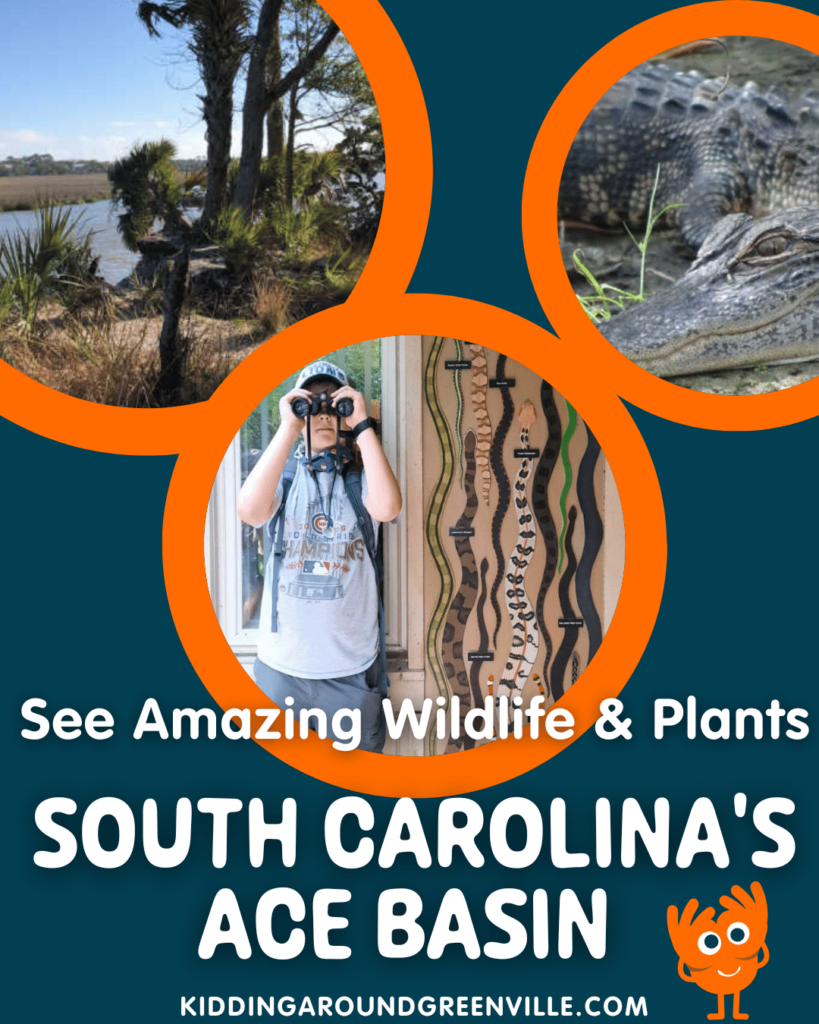Inside: Local mom visits South Carolina’s ACE Basin in the Lowcountry, and is sharing all her tips for your next trip!
Have you visited South Carolina’s ACE Basin in the Lowcountry? Ever wondered to yourself, what is the ACE Basin? Or maybe you just want to know more about this ecologically unique area that checks all the boxes for a fantastic weekend? Keep reading to find out what the ACE Basin is and how best to see it!
What is South Carolina’s ACE Basin?
Three rivers – the Ashepoo, the Combahee and the Edisto (ACE) – come together at St. Helena Sound in South Carolina’s Lowcountry to form a rich estuary. This 350,000-acre ACE Basin watershed contains one of the largest areas of undeveloped wetlands/uplands ecosystems remaining on the Atlantic Coast and features a remarkable interlocking web of ecosystems including forested uplands, wetlands, tidal marshes, barrier islands, and peatlands.
According to The Nature Conservancy, it supports 33 types of natural plant communities and provides critical habitat for waterfowl, migratory birds and endangered species. In 2014, National Geographic featured the ACE Basin as its cover story, and The Nature Conservancy has declared the area “one of the last great places.”
From the early 1700s to the mid-1800s, much of the ACE Basin was home to large plantations that primarily grew rice. In the late 1800s, many of these plantations were purchased by wealthy sportsmen as hunting retreats, who managed the former rice fields and adjacent upland estates for a wide range of wildlife – ensuring that the region remained relatively undeveloped.
Sounds cool! But how can we see it?: How to Visit ACE Basin
The principal road through the ACE Basin is U.S. Highway 17, the ACE Basin Parkway, which skirts the north end of the protected areas connecting Charleston to Yemassee. Small communities within ACE Basin include Bennetts Point, Green Pond, Jacksonboro, Wiggins and Willtown Bluff.
There are numerous access points to the public lands of the ACE Basin including 23 boat landings, allowing visitors opportunities to experience it by land and by water!
Edisto Learning Center & Edisto Beach State Park
A good place to start is at Edisto Beach State Park. The park’s environmental education center is a “green” building with exhibits that highlight the natural history of Edisto Island and the surrounding ACE Basin. One of four oceanfront state parks in South Carolina, it features trails for hiking and biking in addition to the 1.5 miles of beach renowned for its shelling.
Edisto Beach State Park is also an excellent home base for additional ACE Basin explorations; if camping or staying at a cabin there, you are within an easy drive of the Edisto River side of the region including ACE Basin National Wildlife Refuge and Botany Bay!
ACE Basin National Wildlife Refuge
Driving north from Edisto Beach there is a boat ramp at the Dawhoo Bridge that offers westerly views (great for sunset viewing!) over the salt marsh and towards Ernest F. Hollings ACE Basin National Wildlife Refuge. At just under 12,000 acres, the Refuge is key in protecting the Edisto portion of the estuary.
In addition, the Refuge office is a former rice plantation house that was built in 1828, one of only a few antebellum mansions that survived the civil war in the area; today it is protected on the National Register of Historic Places.
You can visit both Grove Plantation House and the kitchen house. The Visitor’s area inside the Plantation House has tons of information for you.
There are a variety of recreational activities such as hunting (in season), picnicking, hiking, fresh and saltwater fishing, canoeing, wildlife watching, photography, and environmental education. Special events and programs are held throughout the year for visitors to learn more about the ACE Basin and National Wildlife Refuges; see the Fish & Wildlife Service website.
Botany Bay
The 3,363 acre Botany Bay Plantation Wildlife Management Area (WMA) is located in the northeast corner of Edisto Island, and is important to numerous wildlife species including the federally-threatened loggerhead sea turtle and the state-threatened least tern.
Cultural sites including the Fig Island Shell Rings, outbuildings from Bleak Hall Plantation and elements of the Alexander Bache U.S. Coast Survey Line – all listed on the National Register of Historic Places.
The causeway to the beach is wheelchair accessible, and the designated driving tour provides excellent viewing opportunities for the mobility impaired; for more information, please visit the SC DNR website.
Edisto River & State Parks
A great way to see the Edisto River is from kayak or canoe. For more on the Edisto River Canoe and Kayak Trail, Edisto River Adventures tubing, and the two SC State Parks that provide access to the Edisto (Givhans Ferry and Colleton).
The blackwater river is the longest of its kind in North America and is a favorite for cooling down on hot summer days.
A portion of the headwaters of the Edisto River and ACE Basin is Four Holes Swamp, which visitors can experience through Audubon’s Beidler Forest. T
his 18,000-acre bird and wildlife sanctuary in the South Carolina Lowcountry is the world’s largest virgin cypress-tupelo swamp forest, home to thousand-year-old trees and a wide range of wildlife.
It is a great place to visit for families, as the entire 1.75-mile trail is a boardwalk: easy to follow, and provides safe viewing of wildlife without getting muddy or wet.
Ravenel Caw Caw Interpretive Center
This nature center has over six miles of walking trails that wind through its diverse habitats, with interpretive exhibits, displays, and an assortment of programs. Boardwalks take visitors through the wetlands and rice fields dating to the eighteenth century.
Caw Caw is a birding hotspot for coastal SC, but is also important historically: it’s one of the important sites of the Stono Rebellion, a Member of the National Park Service’s National Underground Railroad Network to Freedom Program, and features thousands of naturalized tea plants from a 20th-century tea farm.
On your visit, you can expect to see American alligators, swallow-tailed kites, and bald eagles! Admission is $2/person, for more information see the Charleston County Parks website.
Bear Island Game Management Area
It was a hot day in July when we found ourselves turning off Highway 17 towards Bennetts Point a few weeks ago. Much like many of the destinations on this side of Charleston – Edisto Beach, Hunting Island, Hilton Head – there is a significant drive from the main highway to reach the ocean.
Over the next 15 miles we wound our way along live oak-shaded lanes, the giants draped in Spanish moss functioning almost as curtains to the lands beyond. After crossing the Ashepoo River we entered Bear Island Game Management Area home to countless waterfowl and protected species such as wood storks and bald eagles.
The miles of dikes on Bear Island provide plenty of wildlife viewing, hiking, biking and hunting opportunities.
ACE Basin National Estuarine Research Reserve
Soon after passing Bear Island we arrived at the Michael D. McKenzie Field Station. Headquarters for the ACE Basin National Estuarine Research Reserve (NERR), the field station serves as a community hub for coastal science, education and collaboration.
The NERR encompasses nearly 100,000 acres of ACE Basin, and is managed in a joint effort by the South Carolina Department of Natural Resources (SC DNR) and the National Oceanic and Atmospheric Association (NOAA).
Adjacent Mosquito Creek was living up to its name, but luckily we were able to escape the insects by boarding a boat and heading out on the Ashepoo River as part of the South Carolina 7 expedition.
Viewing the ACE Basin from the water is an excellent way to not only get away from the bugs but also to get a feel for the enormity of coastline and estuary protected by the NERR and other entities.
There are numerous science, education and training programs operated by the SC DNR out of the field station including ones off and on the water; the facility contains offices, wet/dry labs, a conference room and an outdoor classroom, while science-related school groups and naturalists visit the field station for a variety of educational outdoor activities.
For more on the programs and workshops offered, please visit the ACE Basin NERR website.
Our boat tour with the SC7 team included an orientation to the ACE Basin watershed, and contained a look at the oyster reefs, plenty of wildlife viewing, and discussions of salt marsh and estuarine diversity.
For those wishing to tour the ACE Basin by boat, but looking for an option other than the NERR, a number of outfitters in Charleston, Beaufort and Colleton counties offer guided kayaking trips on the three rivers, as well as tours for those who prefer to enjoy the scenery from the comfort of a motorboat.
Islands only accessible by boat!
If traveling by water in the area, you more than likely will pass through or near the St. Helena Sound Heritage Preserve, a collection of coastal and barrier islands only accessible by boat. Otter Island is part of this Heritage Preserve, and receives special protection because of its significance for rare plants, threatened and endangered species, and as a historic site.
With developed islands to the north (Edisto) and to the south (Harbor, Fripp and Hunting), Otter Island is the only spot where wildlife species can rest, feed and reproduce without development pressures for a long stretch of coastline. Another barrier island only accessible by boat but providing ample wildlife viewing is South Fenwick Island.
Donnelley Wildlife Management Area
Heading back out from Bennetts Point you’ll pass the 8,000-acre Donnelley Wildlife Management Area just as you reach ACE Basin Parkway (Highway 17). The nature trails here offer birdwatching, hiking, biking, riding and hunting opportunities; check the website for seasonal closure information, as the WMA is closed during certain hunt periods.
When should we visit ACE Basin?
As anyone who has spent time in the Lowcountry knows, each season down near the coast comes with advantages and hindrances. Summer days can be hot and buggy, especially in the marsh, however a hot August day might just be perfect for tubing the Edisto or enjoying the ocean surf.
Spring and fall offer excellent birdwatching, cooler temperatures and fewer bugs, but some areas might see closures for hunt seasons. And while winter might mean you have the trail/boardwalk to yourself, it also brings cold & unpredictable weather…
As with any trip, planning ahead can really pay off in terms of knowing what to expect and what adjustments might have to be made. Our year-round basics include protection against the weather & insects, water and snacks, and comfortable clothes & footwear.
But snakes, alligators, and spiders?!
Before we took our boys tubing on the Edisto, I asked how often they see alligators on that stretch of the river – the answer was never. However, if you are kayaking the Four Holes Swamp, chances are you might see one or two. In any case, the key is to follow the basic guidelines as you would with all animals – keep your distance and don’t feed or harass the wildlife.
For our family, the fear of encountering the animals that get all the bad press has slowly turned to hopes of catching a glimpse of one of them: a gator from a causeway as we head out to one of the barrier islands, a snake from the safety of the boardwalk at Francis Beidler Forest, or a shark feeding out beyond the break as we sit safely on the shore of Edisto Beach.
Know what to do in case you come across a venomous snake, and know how to tell the difference between the ones that can hurt you and the harmless ones that help keep the rodent population in check.
And finally, stay on the trail, be mindful of where you are stepping, and exercise caution when out in the wilderness; animals are a part of the outdoor experience, and will add so much to your ACE Basin adventure!
Something for everyone!
More than 130,000 acres of land have been protected through public/private partnerships in the heart of the ACE Basin, qualifying it as one of the most acclaimed freshwater natural areas found on the East Coast.
It is open to hiking, biking, boating, driving, riding, diving, viewing, and tasting (we enjoy stopping at local stands for fresh produce and seafood – but that’s a whole other post!)… Each time we visit, we discover another thing we love about the area, and I hope this article has inspired you to visit the ACE Basin and find something of your own to love.
Happy adventuring!
For more on the ACE Basin: The Nature Conservancy ACE Basin Website
Check out our Kidding Around Travel Guide to Edisto Beach!
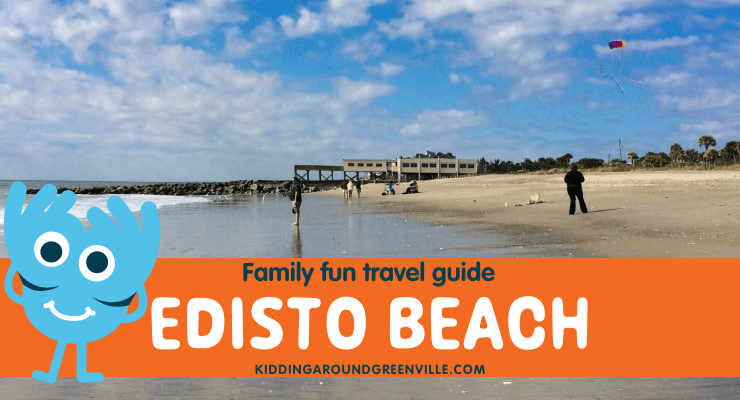

Looking for more fun things to do in the Low Country? Check out our Kidding Around Guide to Charleston, SC!











